THE ODEON ISLEWORTH
DIDN’T THIS BUILDING USED TO BE A CINEMA?
PART EIGHT: SURPRISING RICHMOND
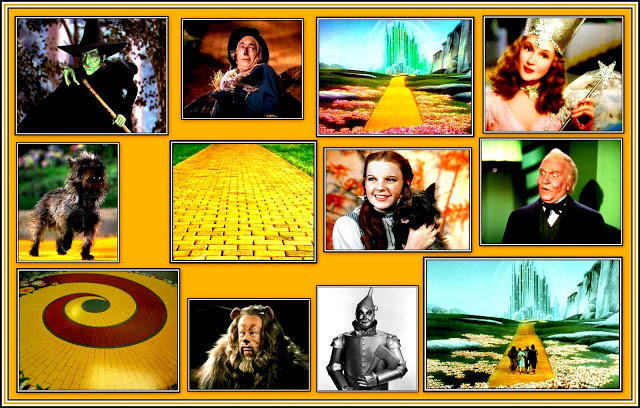 It is better to travel hopefully and well
It is better to travel hopefully and well
——oooOOOooo——
AROUND THE TOWN
Richmond proved to be delightful town in a beautiful setting by the Thames. The shops there include the usual ones, but there are some high-end ones in addition. Evidently those living there are reasonably wealthy.
The area where Richmond now stands was once part of Sheen, which itself was a Saxon settlement. In 1314, Edward II built a Carmelite monastery here and following various additions, the building became a manor house. In 1383 Richard II made it his main residence, but later destroyed it from grief following the death of his wife there. Several other manor houses were built on the site, but it was the last, built by Henry VII in 1501 that became named Richmond Palace. Following this, the town of Richmond began to develop around it. Queen Elizabeth I spent much of her time here, as she enjoyed hunting in the Park, and died here in 1603. After 1649, the Palace was no longer in residential use and by 1779 most of the buildings had decayed. Despite the decline of the Palace, the town prospered and a number of large houses were built on the grounds around it and later on Richmond Hill. In 1777, Richmond Bridge was built connecting the town centre with East Twickenham.
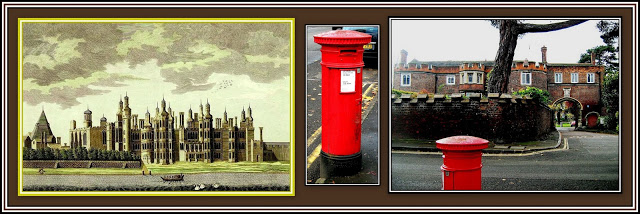 Left: Richmond Palace & Right: an engraving by James Basire from 1765 and the Gate House,
Left: Richmond Palace & Right: an engraving by James Basire from 1765 and the Gate House,
which is all that remains today of the Palace today
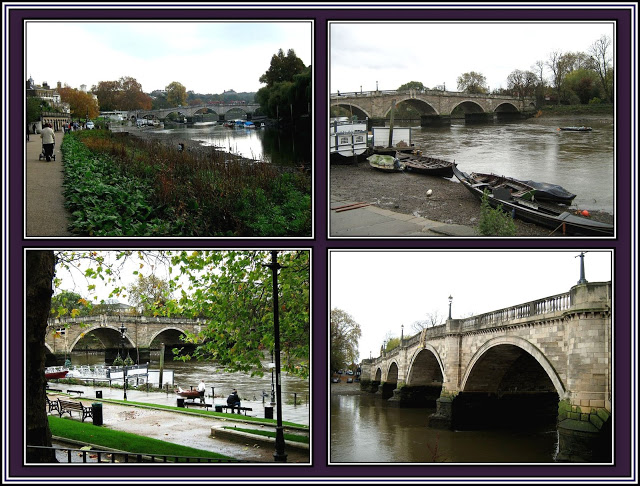 Richmond Bridge – built in 1777
Richmond Bridge – built in 1777
Today there are preserved Georgian terrace houses around Richmond Green and lining Richmond Hill that hold listed status with much of the Hill now being a conservation area.
The afternoon I chose to visit Richmond was bright and sunny however there were two episodes of showers that mercifully quickly passed. However as a result of these rainy interludes, I was caused to seek shelter and in doing so allowed me to discover two delightful buildings.
The first shower occurred while I was discovering the joys of Richmond Green. Fortunately the Richmond Theatre was close to the Green and offered sanctuary during the downpour. The theatre proved to be a remarkable find. After discovering the features of the foyer and box office, one of the agents asked if I was interested in seeing the auditorium. Obviously I did not need to be asked twice and I ushered through the doors at the back of the foyer and into the magnificent auditorium. Although there was very little lighting, I was able to appreciate its remarkable décor. Although I was not able to see the stage, I was able to see the Safety Curtain since it had been rung down.
The current Richmond Theatre was built in the late 19th Century with Frank Matcham as the architect and is considered to be one of his finest works. The theatre was originally named the Richmond Theatre & Opera House and opened in September 1899 with a production of As You Like It. The theatre was renamed a number of times and in 1924 was given its current name, the Richmond Theatre. In the 1990s, the designer Carl Toms oversaw major restorative work on the theatre, which currently houses plays and musicals performed by touring companies, as well as a pantomime at Christmas.
I left the theatre and made my way back to the town centre. As I did, dark clouds appeared overhead and it was soon raining once more.
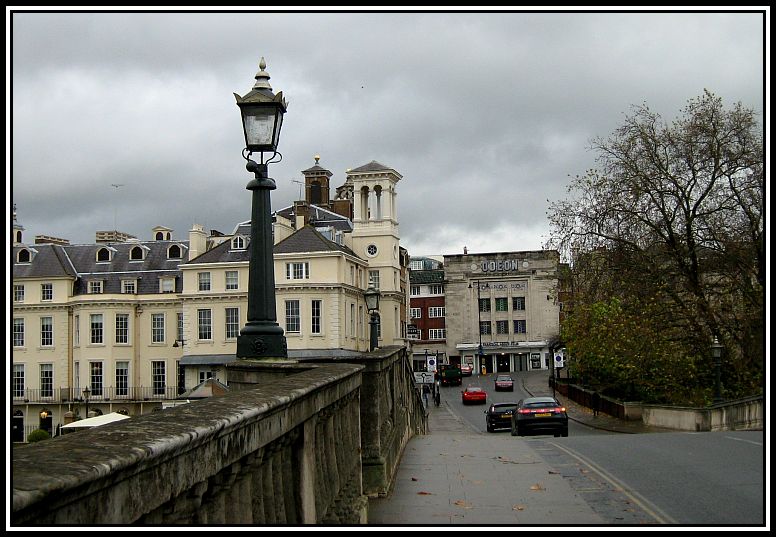 The Odeon Richmond – a view from the bridge
The Odeon Richmond – a view from the bridge
Again I was close to a building of interest, the Odeon Richmond, and went inside to avoid getting wet. While I was waiting in the foyer, I discovered that no one appeared to be on duty. I decided to explore as much as possible until I was told to leave. The current owners of the Odeon Cinema Chain do not welcome un-paying visitors and I have found the staff of a number of other Odeons to be less than welcoming and quite unhelpful when asked questions about their building and have been especially unwilling to allow photograph taking.
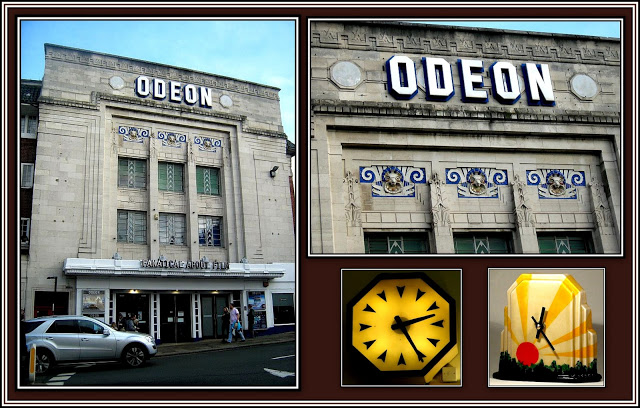 Odeon Richmond with examples of Odeon clocks (Bottom Right)
Odeon Richmond with examples of Odeon clocks (Bottom Right)
During my unauthorized tour, I was suddenly confronted by an elderly gentleman who obviously had noticed my keen interest in the décor and asked if I would like to take a closer look at the cinema. Again, I did not need to be asked twice and the gentleman took me on a tour through the various screens and the projection area. He was one of the projectionists at the cinema and was in charge that day and so was able to take me on a tour. He said that he would most likely be out of a job within the year since the showing of films at the cinema was soon to go digital and most of the projectionists would no longer be needed. Although he appeared to be philosophical about the progress, it was easy to tell that he would regret no longer working at the Odeon, since he spoke joyfully of the cinema when it was still a single screen and going to the cinema was considered special. I told him of my affection for the Odeon Hackney Road, which he had not visited. He was pleased to hear me talk of it and of my memories of the staff when they wore their wonderful chocolate and gold coloured uniforms with pride.
I was first shown Screen 1, which was the old circle. The cinema had been modeled in the style of a 17th Century Spanish courtyard, which was evident once I saw Screen 1. The old circle was still magnificent, as it retained many features of the old cinema including ornate grillwork, Spanish tiles, Moorish windows, stone and plaster oranges and doves.
I was next taken into the large projection area and shown the projection machines currently in operation. I found the corridors of interest as we made our way about the cinema as well as the stairway, which we took down to Screens 2 & 3. These smaller cinemas were formed from the old stalls and were directly beneath Screen 1. The last thing the projectionist said as I said goodbye was that he was pleased that the building had been granted Grade II listing, which should hopefully stop further changes being made to it.
I noticed recently on the Odeon Website that the Odeon Richmond is now able to screen films in 3-D at the Screen 1. Obviously the digital projection machine had now been introduced. I also noticed that there are now additional Screens associated with the Odeon, but these are not inside the original building, but housed close by. Evidently Grade II listing did not allow further structural changes to be made to the old building.
The original building of the Odeon Richmond was built for the Joseph Mears Theatres Circuit and opened in April 1930 as the Richmond Kinema. Incidentally, Joseph Mears, an English businessman, was also a co-founder of Chelsea Football Club.
The auditorium consisted of stalls and circle and had a seating capacity of 1,533. In June 1940 the cinema was renamed the Premier Cinema thereby allowing Richmond to be dropped from the name. It was commonplace in the war years to do this since having a town’s name associated with its building could aid German parachutists were they to land in the area. The cinema was acquired by Oscar Deutsch in May 1941 and became part of his Odeon Cinemas Circuit and renamed accordingly. On 30th December, 1972, the auditorium was converted into a triple screen with Screen 1, the original circle, now seating 406 and Screens 2 & 3 both seating 178.
The downpour was long since over when I left the cinema. I made my way down to Richmond Bridge, which connects the town with East Twickenham. The bridge and the river bank have a tremendous charm and I took the time to walk along the south bank and admire the boats and buildings The bridge was built in 1777 and was a beautiful construction and it took me quite some time to walk across it as the views proved to be extremely attractive as well as interesting.
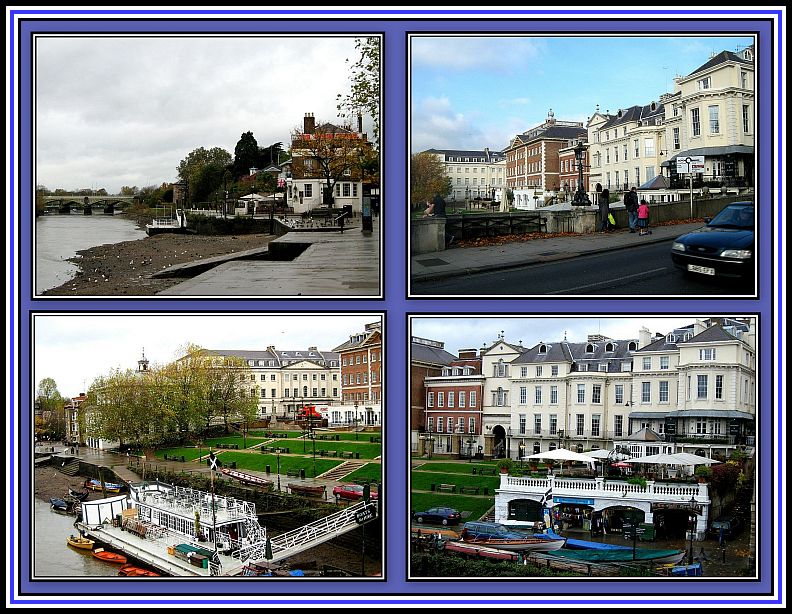 Down by the Richmond Riverside
Down by the Richmond Riverside
I had decided to return to Central London via Hounslow and not risk convulsing with laughter again by returning via East Sheen. And besides, it had been a number of years since I had visited Hounslow and I wanted to see how much it had changed.
And little did I realise that this decision would prove fortuitous, as well interesting and informative. However, above all, the decision proved to be most surprising and proved, yet again, that it is better to travel hopefully!
——oooOOOooo——
Click here to go to
PART NINE: WAIT A MINUTE ……. THIS DID USED TO BE AN ODEON!!!
——oooOOOooo——
PART SEVEN: THE ROAD TO RICHMOND – MAKING DISCOVERIES
——oooOOOooo——
Click here to return to THE ODEON ISLEWORTH Home Page
——oooOOOooo——
Click here to return to the TABLE OF CONTENTS
——oooOOOooo——


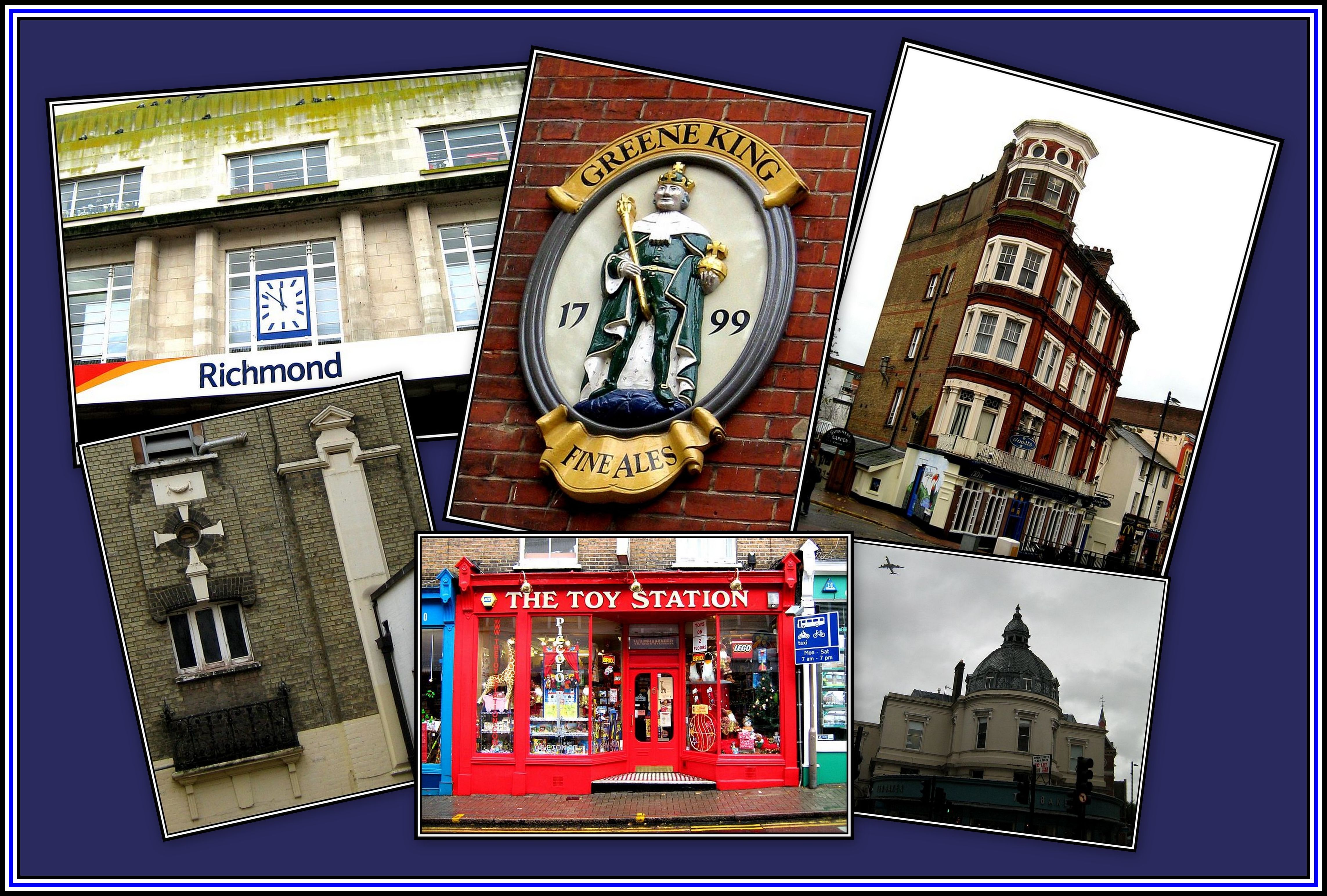
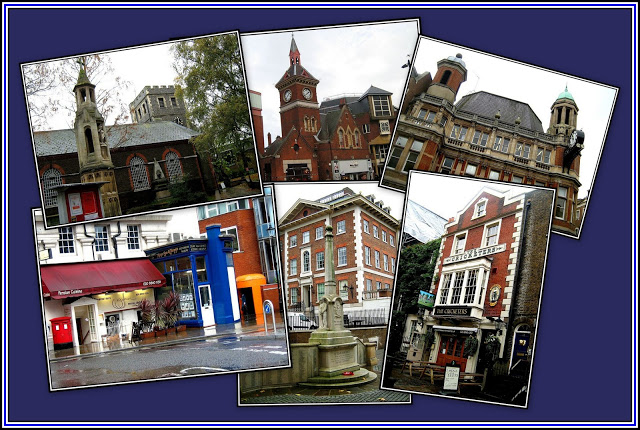
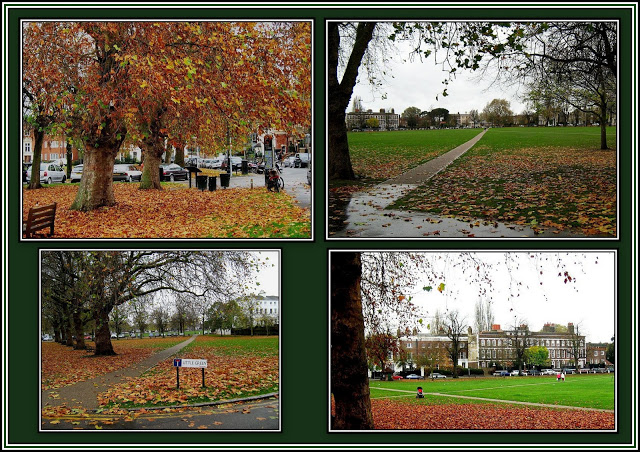
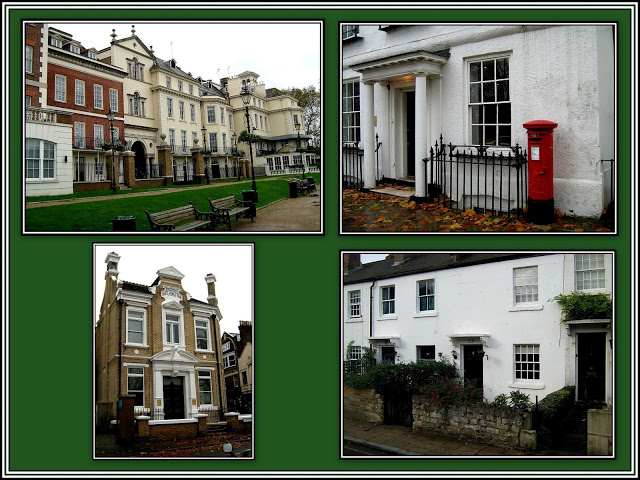
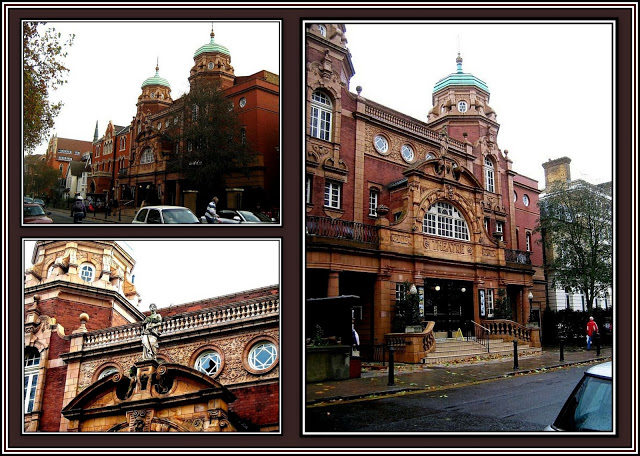
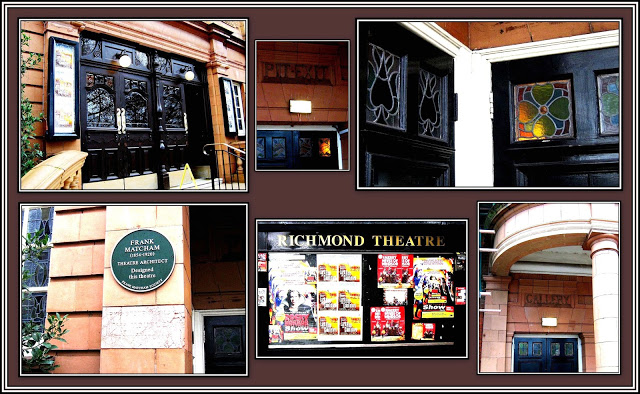
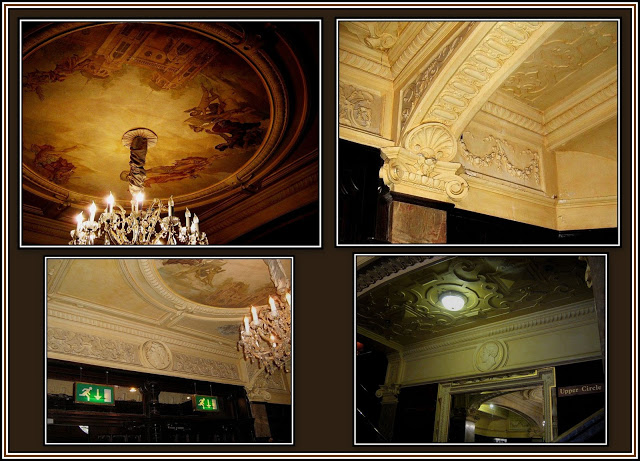
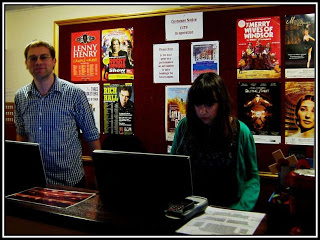
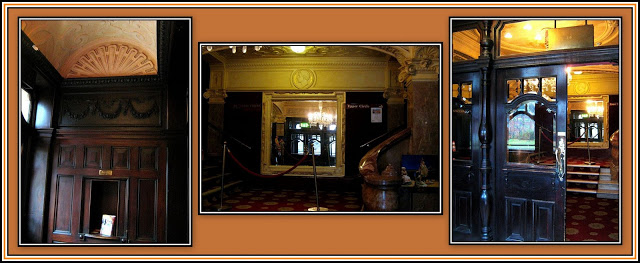
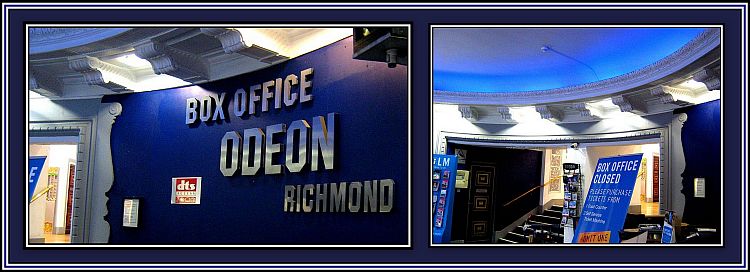
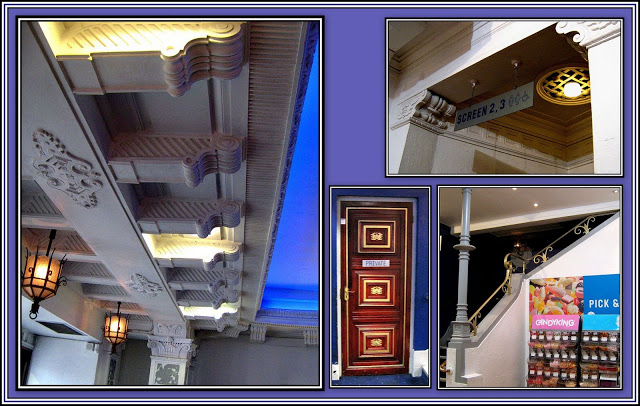
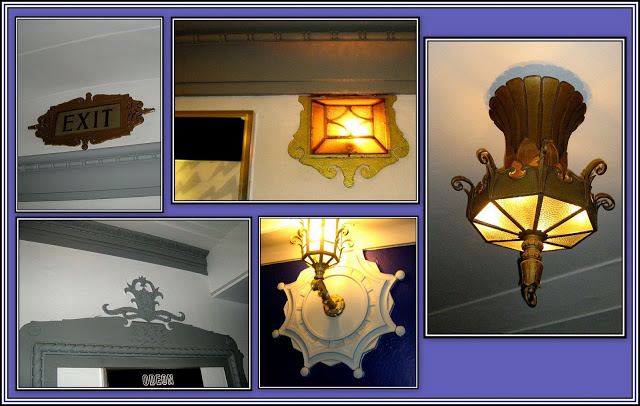

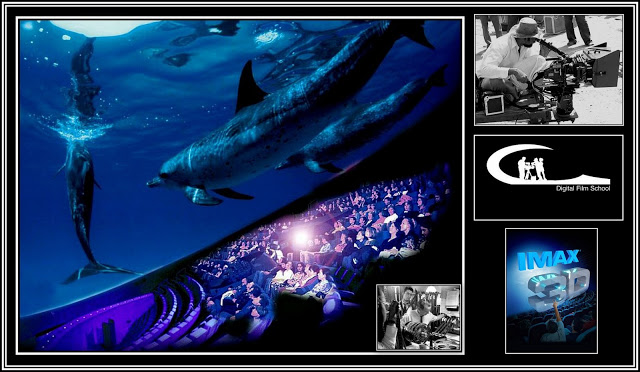
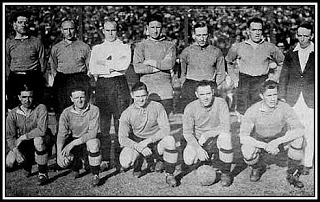
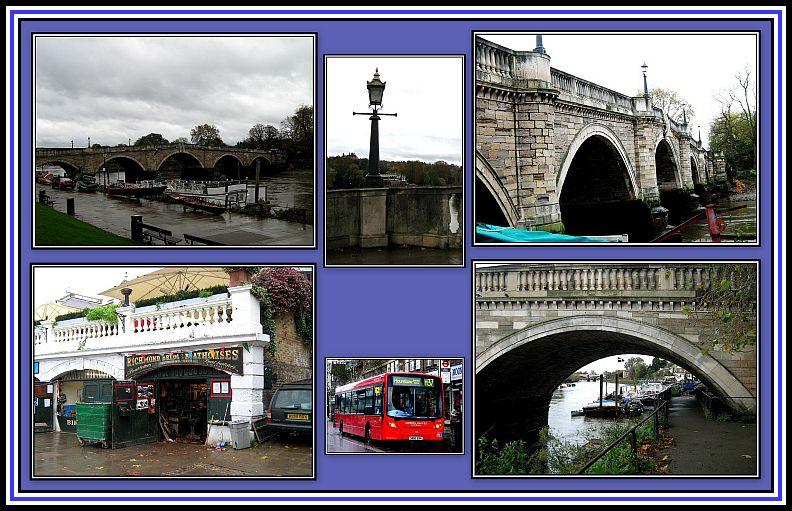
I’m fascinated by your visit to the Richmond Odeon. I am worried that the exterior of the facade is in need of tlc. The rams heads and the tiles are so lovely but from what you say the owners(who are they?) are not interested in cleaning and taking care of it. The council are busy reviving richmond station- can they be encouraged to refurbish the exterior of the cinema?
There is also another item requiring some tlc on the foot path by the rail bridge on the Surrey bank there are two stainless Steele pillows and you are invited to look between them to view the old observatory but they have been treated so badly over the years- looks as though they have been beaten with a hammer in an effort to obliterate the text engraved on the two pillars. I don’t know who is responsible for this installation but it needs tlc and weeding and re engraving. Any ideas?
Ms Fairclough: Thank you for visiting my website and for sending a comment. According to Wikipedia: “Through a number of sales and acquisitions in the early 2000s the company was purchased by Terra Firma, which merged Odeon and UCI Cinemas to form Odeon UCI Cinemas Group. Most UCI cinemas then took the Odeon brand name in 2006. Terra Firma/UCI sold the company to AMC Theatres in November 2016. Ironically, UCI was originally formed through the merger of AMC UK and Cinema International Corporation in 1989.” In other words, the Odeons are owned by big business whose primary goal is making money for their shareholders. I have found Councils to be of no help at all – anywhere and everywhere – to be of help in the history of their locals. I no longer live in the UK and so can not be active there. Sorry to sound so pessimistic, but alas we live in times when the past and its beauty have no place in modern life. Regards.